24 Hours Hotline: +8613735411378
Email:[email protected]
24 Hours Hotline: +8613735411378
Email:[email protected]
Introduction: A Cross-Border Dialogue Between Urban Gardens and Natural Wonders
Singapore, famously known as the “Garden City,” is a shining example of modern urban living harmoniously integrated with lush greenery. From the futuristic Supertree Grove in Gardens by the Bay to the peaceful greenery of the Botanic Gardens — a UNESCO World Heritage site — the city offers residents and visitors alike a refreshing oasis amid skyscrapers.
In stark yet beautiful contrast, Zhangjiajie in China reveals the raw, untouched majesty of nature. Known globally as the inspiration behind the “Avatar” film’s floating mountains, Zhangjiajie’s towering sandstone pillars, mysterious mist, and dense forests invite travelers into a realm of natural wonder and spiritual tranquility.
While one dazzles with human-crafted greenery, and the other mesmerizes with primal nature, both destinations emphasize the intimate relationship between nature and culture. Increasingly, Singaporean travellers are drawn to Zhangjiajie for its cooler climate, rich cultural heritage, and unparalleled natural landscapes — making it an ideal summer getaway and cultural exploration spot.
Emerging Travel Trends: Singapore to Zhangjiajie
Steady Growth in Visitors: Data from travel platforms and flight searches show a growing number of Singaporean tourists adding Zhangjiajie to their travel bucket lists year after year.
From Checklist Tourism to Immersive Experiences: More travellers seek meaningful engagement — whether it’s joining local festivals, learning traditional crafts, or meditating in ancient temples — moving beyond simple sightseeing.
Rise of Customized Travel: Independent travelers prefer flexible itineraries, private guides, and curated tours tailored to their interests, offering a richer, more personal experience.
Why Singapore and Zhangjiajie Make the Ultimate Complementary Travel Pair
1. Climate: From Tropical Heat to Mountain Cool
Singapore’s tropical climate means warm, humid days throughout the year. Zhangjiajie, nestled in mountainous terrain, offers refreshing cool summers and mild springs and autumns. For Singaporeans looking to escape the city’s heat, Zhangjiajie is a natural “air-conditioned” retreat, where fresh mountain air rejuvenates body and mind.
2. Culture: A Spiritual and Ethnic Tapestry
Singapore’s multicultural society includes a rich blend of Buddhism and Taoism, which finds resonance in Zhangjiajie’s spiritual landmarks. The area is famed as a birthplace of Zen Buddhism and an important Taoist pilgrimage site. Exploring ancient temples, cliffside shrines, and learning about the indigenous Tujia and Bai ethnic cultures provide Singaporean visitors a unique cultural mirror and a chance to deepen their understanding of shared heritage.
3. Travel Style: Urban Leisure Meets Nature Adventure
Singapore offers sleek, urban-style leisure — dining in rooftop gardens, strolling art-lined promenades, or relaxing in chic cafes surrounded by greenery. Zhangjiajie offers something fundamentally different: exhilarating hikes across dramatic landscapes, adrenaline-pumping glass bridges, and serene moments atop mist-covered peaks. Together, these destinations create a well-rounded travel experience, satisfying both city lovers and nature enthusiasts.
Top 5 Reasons Why Singaporeans Choose Zhangjiajie
1. Cool Climate & Natural Wellness: Escape Singapore’s tropical heat with Zhangjiajie’s cool mountain air, perfect for hiking, yoga, or simply unwinding amid nature’s calm.
2. Spiritual & Cultural Exploration: Visit centuries-old Buddhist and Taoist sites that offer meditative spaces and insights into ancient philosophies that resonate deeply with Singapore’s religious diversity.
3. Kung Fu & Martial Arts Immersion: For fans of martial arts and Chinese culture, Zhangjiajie offers hands-on experiences and workshops, bringing legendary kung fu tales to life.
4. Iconic Photography & Natural Marvels: Capture stunning shots of the Hallelujah Mountains, the world’s longest and highest glass bridge, and breathtaking sunrises above the clouds — memories that last a lifetime.
5. Educational & Interactive Family Travel: Ideal for families, Zhangjiajie offers children interactive lessons on nature conservation, ethnic minority culture, and traditional crafts, turning travel into a fun, meaningful learning adventure.
Visa & Entry Guidance for Singapore Passport Holders
Singapore citizens currently enjoy short-stay, visa-free entry to mainland China for tourism, business, and family visits (length of stay subject to the policy in effect at your time of travel; please reconfirm before booking). You must hold a passport with at least six months’ validity beyond entry and onward/return travel proof. Although visa-free, hotel registration and real-name ticketing (rail, flights, attractions) still require valid passport presentation. If traveling with non-Singapore passport companions, confirm their visa status separately.
At-a-Glance Trip Facts
Recommended Duration: 4–5 days (can be compressed into 3D2N with helicopter + highlights)
Ideal For: Couples, families with school-age kids, photographers, soft adventurers, nature lovers
Signature Experiences: Zhangjiajie National Forest Park, Tianmen Mountain Skywalk & Glass Walkway, Baofeng Lake cruise, Yellow Dragon Cave, Wulingyuan aerial views by helicopter, world-famous Glass Bridge at Zhangjiajie Grand Canyon (optional add-on)
Travel Style: Fully guided private tour (recommended) or semi-independent with local day tours
How to Get to Zhangjiajie from Singapore
Although there are currently no direct flights from Singapore to Zhangjiajie, getting there is easier than it seems, with several efficient connection routes available through major Chinese cities. Here’s how you can plan your journey step-by-step:
Step 1: Fly from Singapore to a Major Chinese Hub
Your first step is booking a flight from Singapore Changi Airport (SIN) to one of China’s well-connected gateway cities. The most convenient options include:
Guangzhou (CAN) – With multiple daily flights operated by China Southern Airlines and Scoot, Guangzhou is one of the most direct and affordable hubs. The flight takes approximately 4 to 4.5 hours.
Changsha (CSX) – Often overlooked, Changsha is geographically close to Zhangjiajie and offers one of the quickest land connections onward. Scoot and China Eastern sometimes operate seasonal flights to Changsha in under 5 hours.
Chengdu (TFU) – For those interested in combining a short stopover, Chengdu is a foodie’s paradise and has high-speed rail links to Zhangjiajie.
Chongqing (CKG) – Another solid option with regular flights from Singapore, Chongqing also has direct flights and rail service to Zhangjiajie.
Step 2: Connect to Zhangjiajie
Once in China, you can choose between a short domestic flight or a high-speed train to Zhangjiajie, depending on your arrival city and travel preferences:
From Guangzhou: Direct flights from Guangzhou to Zhangjiajie take about 1.5 hours and are available several times per week. Alternatively, you can take a high-speed train to Changsha (approx. 2.5–3 hours), then connect by train or car to Zhangjiajie.
From Changsha: This is one of the best overland routes. A high-speed train from Changsha South Railway Station to Zhangjiajie West takes just 3.5–4 hours, and the views along the way are beautiful. Private car transfers from Changsha Airport to Zhangjiajie are also available and take around 5 hours.
From Chengdu or Chongqing: Both cities offer occasional direct flights to Zhangjiajie, with flight durations ranging from 1.5 to 2 hours. You can also travel part of the way by high-speed rail and then transfer by car for the final stretch.
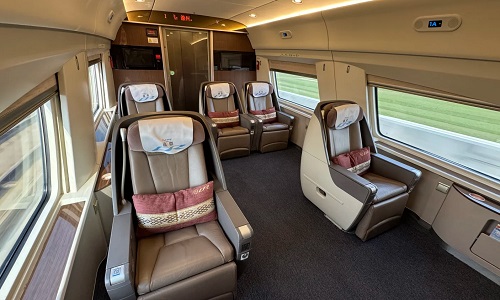
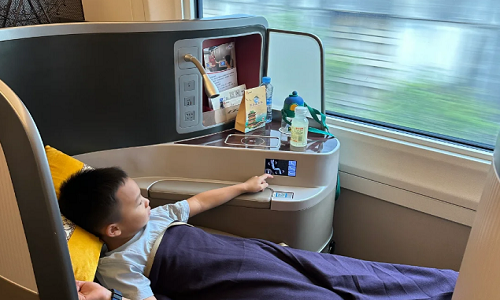
Pro Tip:
If you're short on time and want to keep things smooth and stress-free, we recommend choosing a route through Changsha or Guangzhou, as they offer the most convenient onward connections to Zhangjiajie. We can also arrange private airport pickups, flexible guide schedules, and hotel check-in support to make your arrival seamless.
Top Attractions in Zhangjiajie: What You’ll Experience
Whether you're a thrill-seeker, a nature lover, or a family of explorers, Zhangjiajie has something unforgettable for you.
Zhangjiajie National Forest Park
Home to Avatar Hallelujah Mountain, Golden Whip Stream, and the Bailong Elevator (world's tallest outdoor elevator).
Zhangjiajie Glass Bridge
Suspended over a dramatic canyon, this is the world’s longest and highest glass bridge — both thrilling and scenic!
Tianmen Mountain
Take the world’s longest cable car ride and walk the cliffside glass skywalks.
Marvel at the Tianmen Cave, a giant natural archway nicknamed “Heaven’s Gate.”
Optional Helicopter Tour
Soar above the pinnacles for once-in-a-lifetime aerial views.
Best Time to Visit Zhangjiajie (Tailored for Singapore Travellers)
Zhangjiajie is a year-round destination, but your travel experience can be enhanced by aligning it with Singapore’s holiday calendar and preferred seasons. Here’s a guide to help you plan the perfect escape:
Spring (April – May)
Why go: Mild temperatures, blooming wildflowers, fewer crowds
Perfect for: Nature walks, family outings, photography
Travel Tip: Ideal for a long weekend during Good Friday or Labour Day holidays — enjoy cool, scenic trails before the summer crowds arrive.
Autumn (September – October)
Why go: Clear skies, golden foliage, comfortable climate
Perfect for: Cultural tours, spiritual retreats, hiking
Travel Tip: Coincides with September school holidays and Deepavali. Great time to explore nature while also experiencing local ethnic festivals like the Tujia Harvest Celebrations.
Summer (June – August)
Why go: Cool mountain air (compared to Singapore’s heat), lush green forests
Perfect for: Adventure seekers, families, school holiday trips
Travel Tip: Escape Singapore’s hottest months during the June school holidays. Expect some rain, but it adds to the mystical mountain atmosphere — especially stunning at Tianmen Mountain and Yuanjiajie.
Winter (December – February)
Why go: Peaceful misty landscapes, fewer tourists, snow-capped peaks (occasionally)
Perfect for: Zen retreats, off-the-beaten-path exploration
Travel Tip: For a tranquil year-end trip during Christmas, New Year, or Chinese New Year, winter in Zhangjiajie offers a quiet, dreamlike beauty — ideal for reflection or a romantic getaway.
How Many Days Do You Really Need?
Below are sample structures designed specifically for travelers coming from Singapore with limited holiday time.
3 Days (Fast-Track) – Fly In, Fly Over, See the Highlights
Best For: Time-pressed travelers; weekend warriors; anniversary splurge.
Day 1: Arrival + Helicopter flight over Wulingyuan pillars + Baofeng Lake
Day 2: Zhangjiajie National Forest Park (Yuanjiajie, Tianzi Mountain, Bailong Elevator)
Day 3: Tianmen Mountain cableway + Glass Skywalk ? Depart
4 Days (Balanced Classic)
Day 1: Arrive Zhangjiajie; optional evening Old Town walk
Day 2: Zhangjiajie National Forest Park (Yuanjiajie, Tianzi Mountain)
Day 3: Tianmen Mountain + Glass Skywalk + cave elevator descent
Day 4: Baofeng Lake + Yellow Dragon Cave; depart or extend to Fenghuang Ancient Town
5 Days (Signature + Breathing Room)
Adds buffer time for weather delays on cable cars, deeper photography, cultural meal with Tujia family, or full Grand Canyon & Glass Bridge extension.
Zhangjiajie Helicopter Options – Should You Add One?
Seeing Zhangjiajie’s vertical sandstone world from above is unforgettable. Helicopter flights operate from the Wulingyuan area and range from quick scenic hops to extended loops that circle the national park and surrounding canyons.
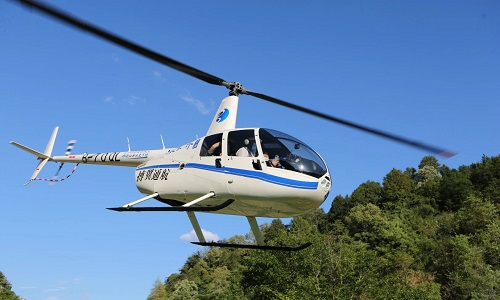
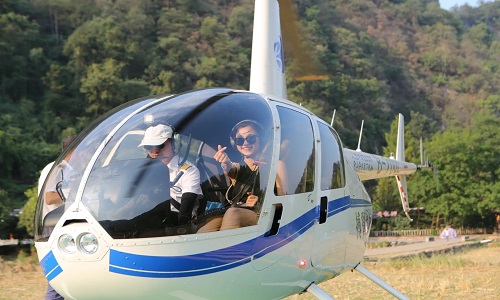
Sample Route Types:
Short Intro Circuit: Entrance Gate – Baofeng Lake – Baizhang Gorge – return (approx. 10 km)
Extended Scenic Loop: Adds Wulingyuan town and full park orbit for sweeping pillar views (approx. 35 km)
Premium Charter: Includes Zhangjiajie Grand Canyon, Yellow Dragon Cave, and extended peak-forest flyover (approx. 75 km; private charter)
Fully Custom Charter: Tailored 130 km max routing per request (sunrise, photography focus, proposal flights)
Helicopters seat up to three passengers; two required to launch. Weight balance determines seating; all seats have panoramic viewing.
Family Travel Notes for Singapore Visitors
Altitude is moderate; most travelers adjust well.
Elevators, cable cars, and eco-buses reduce hiking strain for children and seniors.
Stroller use limited in mountain zones; consider a carrier for toddlers.
Local cuisine is Hunan-style (spicy); guides can arrange milder meals or halal/veg requests.
Weather changes quickly; pack a lightweight rain shell even on sunny days.
Zhangjiajie Packing Tips – For Travelers from Singapore
Traveling from a warm, humid climate like Singapore to Zhangjiajie—known for its mountainous terrain and cooler seasonal temperatures—can be a bit of a shift, especially if you're visiting in spring or autumn. To help you stay comfortable and well-prepared, here’s a breakdown of what to pack:
1. Smart Layered Clothing
Zhangjiajie’s temperature can vary significantly throughout the day, especially in the mornings and evenings. Start with a moisture-wicking base layer (like sportswear), add a lightweight fleece or hoodie for warmth, and top it off with a windproof jacket. This layering system lets you adjust easily as you go from sun-drenched valleys to breezy mountaintops.
2. Reliable Footwear
Expect lots of walking, stair-climbing, and the occasional damp stone path. Pack sturdy walking shoes or hiking sneakers with good grip—especially important for navigating trails like Tianzi Mountain or the glass bridge walkway. Water resistance is a plus!
3. Power & Connectivity
Bring a high-capacity power bank to keep your phone and camera going throughout the day—you’ll be taking a lot of photos. Chinese plug sockets mainly use Type A and I, so pack a compatible adapter or universal converter to stay charged at your hotel.
4. Identification Essentials
Hotels in China require you to present your passport at check-in, and scenic areas often need ID for ticket verification. Keep digital and printed copies of your passport and travel documents handy at all times.
5. Motion Comfort
If you're planning to experience the breathtaking Zhangjiajie helicopter ride or drive through winding mountain roads, consider packing motion sickness remedies such as sea-bands, ginger candy, or non-drowsy medication—especially if you're sensitive to motion.
6. Extra Tips for a Smoother Experience
Bring light gloves and a beanie if visiting between October and March
Sunglasses and sunscreen are still useful—even on cool days, the mountain sun can be strong
A small daypack is helpful for carrying layers, snacks, and a water bottle during hikes
Keep WeChat Pay or Alipay installed if possible—many vendors are cashless
By packing thoughtfully, you’ll not only stay comfortable but also maximize your enjoyment of Zhangjiajie’s dramatic landscapes and outdoor experiences. Whether it’s stepping onto the world’s highest glass bridge or gliding above the Avatar Mountains by cable car, being well-equipped will make every moment even more unforgettable.
Add-On Destinations That Pair Well with Zhangjiajie from Singapore
Short on time? Pair Zhangjiajie with Guangzhou, Changsha, or Shanghai for an urban + nature contrast. Have 6–8 days? Add Guilin & Yangshuo or Fenghuang Ancient Town. For families seeking wildlife, fold in a Chengdu Panda Day en route home.
Language & Communication: Simple Mandarin Makes a Big Difference
While English is widely spoken in Singapore, in Zhangjiajie most locals — especially in rural or scenic areas — speak only Mandarin or local dialects. Learning a few simple Mandarin phrases can greatly enhance your experience.
Phrases like ni hao – hello , xièxiè – thank you,
zenme zou? – how do I get there?
bù yào là – no spicy will be super handy.
It also helps to have your hotel name or key attractions saved in Chinese characters on your phone to show taxi drivers or staff.
Apps like Google Translate, Pleco, or WeChat Translate are great companions — especially with photo or voice translation features.
Cultural Etiquette: Respect and Politeness Go a Long Way
Zhangjiajie’s people are friendly and curious, especially toward Southeast Asian visitors. Still, a little cultural sensitivity helps:
Avoid speaking loudly in public places.
In temples or heritage sites, dress modestly and act respectfully.
When offered food or tea, it’s polite to at least taste it.
Locals appreciate it when travelers show interest in their traditions — especially the Tujia ethnic minority culture prominent in the region.
One simple rule: be humble, patient, and respectful — and you’ll be warmly received.
Food Experience: Spicy, Savoury & Full of Surprise
Zhangjiajie is located in Hunan Province — the heartland of bold, spicy, and aromatic cuisine. For food-loving Singaporeans, especially those who enjoy mala, sambal, or laksa-style heat, Hunan cuisine offers an exciting yet oddly familiar flavour experience. Hunan food is famous for its use of fresh chilies, garlic, fermented sauces, and smoked ingredients — it’s not just spicy, it’s complex, layered, and full of personality.
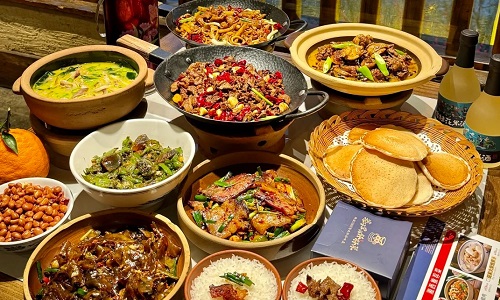
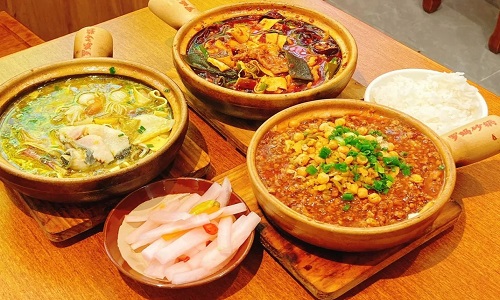
Don’t miss:
Suan La Fen: Hot and sour sweet potato noodles
Smoked bacon stir-fry: Local greens with preserved pork
Mountain chicken hotpot: Cooked over woodfire with herbs
Not into spicy? Say “bù yào là” – no spice, though a mild tingle may still come through. Vegetarians can say “wo chi sù”.
Singaporean travelers may find breakfast and snacks less familiar — pack some instant coffee or kaya toast sachets just in case!
Pro Tips for Singaporean Travellers:
Breakfast Adjustments: Local breakfasts lean savoury — think pickles, congee, or noodles. If you're missing your kopi and kaya, pack some instant coffee sticks, kaya toast sachets, or even Milo for a taste of home.
Snack Culture: You’ll find dried spicy tofu, preserved fruits, and crispy rice crackers everywhere. If you're used to teh tarik and curry puffs, try local equivalents like sweet glutinous rice cakes or sesame-filled buns.
Flavour Matchmaking: Love laksa, sambal stingray, or mala hotpot? You’ll probably love Hunan’s spicy dishes. Prefer chicken rice and fish soup? Opt for milder broths or braised options like stewed tofu with mushrooms.
Getting There & Getting Around: Easy, But Plan Ahead
There’s no direct flight from Singapore to Zhangjiajie, but you can transit via Changsha, Guangzhou, or Chongqing. From those hubs, catch a domestic flight or a high-speed train (especially from Changsha).
Once in Zhangjiajie:
Airport to city: ~30 minutes by taxi or Didi (China’s Uber)
City to Wulingyuan (main park area): 45–60 minutes by car or shuttle bus
Within scenic areas: Eco-buses, cable cars, elevators, and trams connect key sights
Tip: Install Didi (you can use a foreign phone number + Apple Pay), and keep destinations written in Chinese.
Pitfall Alerts: Avoid These Common Mistakes
Avoid peak holidays like Chinese New Year or Golden Week — crowds are overwhelming.
Buy tickets from official sources only — avoid scalpers offering “VIP fast passes”.
Watch out for walking distances — some scenic areas require 10,000+ steps!
Don’t rely on credit cards — they rarely work. Use Alipay/WeChat Pay or cash.
Don’t expect perfect English service — prepare translation tools and key terms in Chinese.
Where to Stay: Best Locations for a Short Trip
There are three key areas to consider:
Wulingyuan Town: Closest to Zhangjiajie National Forest Park, best for nature access. Many boutique hotels and eco-lodges here.
Zhangjiajie City: Convenient for Tianmen Mountain and transportation links.
Scenic Countryside or Homestays: Ideal for immersive cultural stays, but require more planning.
Tip: Choose a hotel with shuttle services and staff who can speak basic English or use translation apps.
Photography & Best Viewing Times
Zhangjiajie is a dream for photographers. To get the best shots:
Best time for photos: Early morning (7–9am) or late afternoon (4–6pm)
Best seasons: Spring (Mar–May) and Autumn (Sep–Nov) — clearer skies, golden light, and fewer crowds
Best spots:
Avatar Hallelujah Mountain in Yuanjiajie
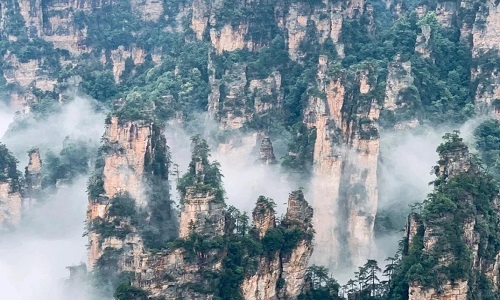
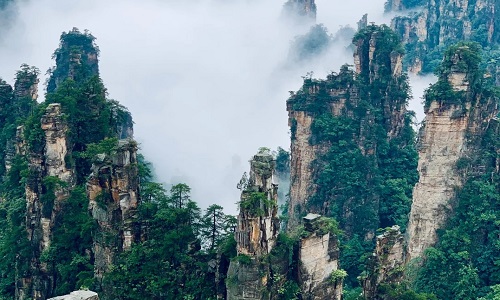
Tianzi Mountain for panoramic sunrise
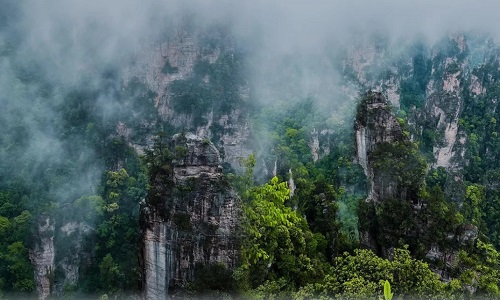
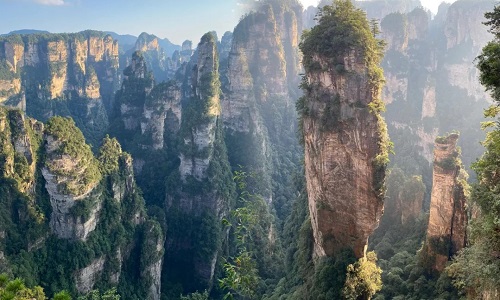
Tianmen Mountain Glass Skywalk for thrill-seekers
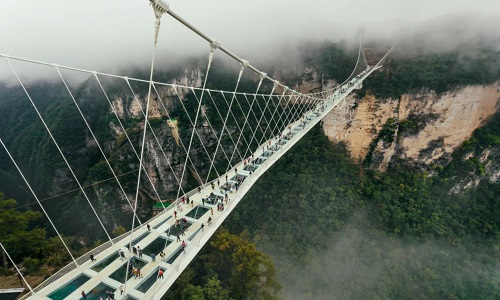
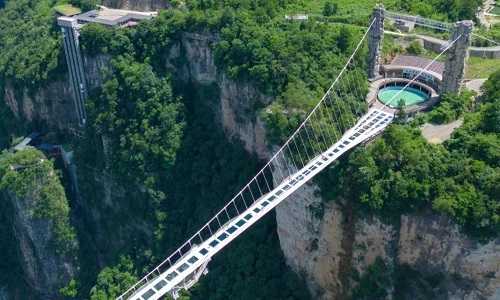
Don’t fear mist — it adds mystery and cinematic feel to your shots.
Bring: Power bank, wide-angle lens (or phone lens clip), and backup storage!
Hiking & Nature Experiences
For active travelers, Zhangjiajie offers some of China’s most unique hiking experiences:
Golden Whip Stream Trail: Flat, scenic, peaceful — great for beginners
Tianzi Mountain Trails: More challenging, with stair climbs but incredible views
Tianmen Mountain Cable Car + Hike: World's longest cable car + cliffside paths
Tips for Singaporean Hikers in Zhangjiajie
Weather: Much cooler than Singapore — no sticky humidity! Bring a light jacket, especially in the mountains.
Altitude & Stairs: Expect lots of steps and some elevation — pace yourself and take breaks.
Footwear: Wear shoes with good grip, especially if it rains (trails can get slippery).
Stay Hydrated: Pack water and light snacks — convenient shops aren’t always nearby in the mountains.
Photos: Don’t forget your camera or phone — this is Instagram gold for nature lovers.
Wi-Fi, Mobile & Payment:
Wi-Fi is available in most hotels and cafes, but can be spotty in mountains.
SIM cards: Get a Chinese SIM (e.g., China Unicom) at the airport or use an eSIM with roaming.
VPN needed? If you want access to Google, WhatsApp, Instagram — yes, install a VPN before arrival.
Payment:
Cash is still accepted, but China is 90% mobile-pay.
Alipay/WeChat Pay now allow foreign cards — set this up before departure!
Have ~300–500 RMB in cash for taxis, snacks, small vendors.
Extra Tip:
For Singaporeans used to NETS or PayNow, China's mobile pay ecosystem may feel different — but it’s equally seamless once set up. Local guides or hotel front desks are usually happy to assist with app setup.
Souvenirs to Bring Home
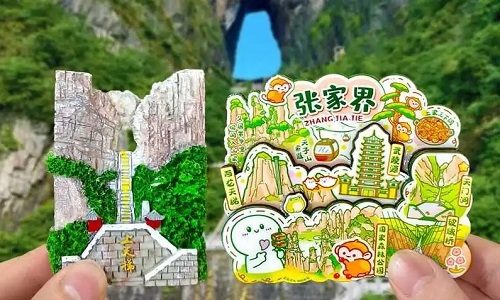
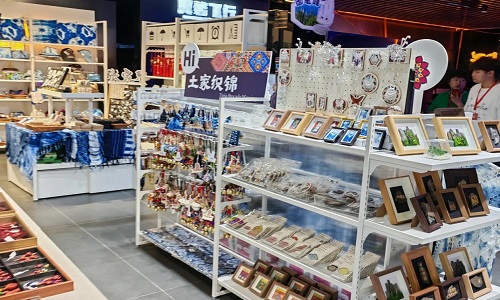
Looking for meaningful souvenirs or thoughtful gifts for friends and family back home in Singapore? Zhangjiajie offers a range of unique, high-quality items that blend tradition with charm — perfect for a city that appreciates both heritage and craftsmanship.
Tujia-style Embroidery
Delicate, vibrant, and entirely handmade, these embroidered pieces reflect the rich cultural symbolism of the Tujia ethnic group. Great as framed wall art or fashion accessories — ideal for gifting to someone who appreciates Peranakan beadwork or batik, with a twist of Chinese heritage.
Wild Mountain Tea
Zhangjiajie’s cool mountain climate produces fragrant and pure teas. Try the local black tea or jasmine-infused green tea — both smooth and refreshing, perfect for Singapore’s humid climate. These teas also pair beautifully with local snacks or as elegant gifts in tea-tasting sets.
Wood or Stone Carvings Inspired by Avatar Mountains
Miniature sculptures echoing the iconic sandstone pillars or Tianmen Cave — intricately carved from native wood or stone. These make meaningful desk décor or home ornaments, especially appealing to collectors of travel memorabilia.
Scroll Paintings & Artistic Postcards
Bring home the ethereal landscapes of Zhangjiajie with hand-painted scrolls or mist-covered mountain postcards — compact, artistic, and a lovely alternative to conventional travel magnets. Perfect for those who appreciate Chinese ink art or minimalist aesthetics.
Traditional Herbal Balms & Camphor Oil
Locally produced, these soothing balms are made from herbs grown in the Zhangjiajie mountains. Great for relieving muscle tension or mosquito bites — a practical souvenir that Singaporeans will find genuinely useful, especially during travels or hikes.
Where to Shop Like a Local
Wulingyuan Old Town: Ideal for browsing artisanal crafts and enjoying a relaxed, heritage-rich shopping vibe.
Tianmen Mountain Souvenir Stalls: Great for scenic photo souvenirs and local snacks right after your hike or cable car ride.
Local Craft Markets (especially evening markets): Look for pop-up stalls selling ethnic jewelry, textiles, and handmade tea sets — a great place to find bargains and interact with local artisans.
Pro Tip for Singaporeans: Many local vendors accept mobile payments (WeChat Pay or Alipay), but carrying some cash is useful. Bring an extra tote — the unique finds are hard to resist!
Wechat: Chinaprivatetour
24 Hours Hotline:
+8613735411378
1 to 1 tailor-made service from our professional travel advisors for the most sophisticated
Constantly excellent reviews for attraction, hotel and service Competitive price
Local experts provide quality tours Best selected knowledgeable local guides Authentic local restaurants
7*24 hours available to create you a worry-free tour. No Hidden Fees and absolutely no pressure to buy. Secured







